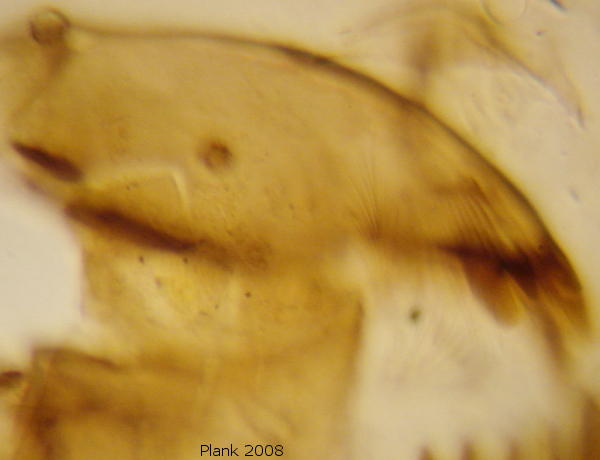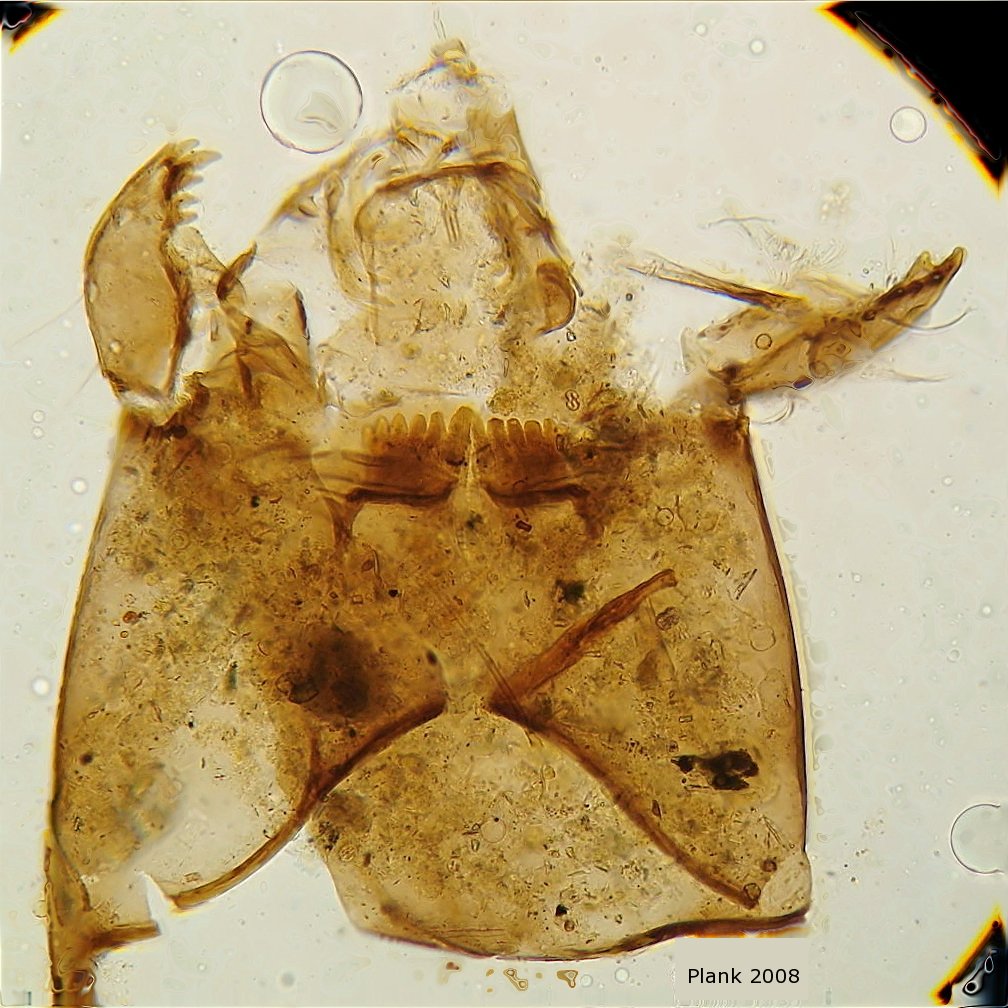Tanytarsus lapponicus-type Lindeberg 1970
(By Andreas Plank from 10th April 2008, last modified 19. March 2019)
History of names
- Tanytarsus lugens-indet1
- Tanytarsus lapponicus-type
Below you can read older comments.
Characters
- premandible: 4+1 lateral spine,
- mandible: 3-1-2-2 (inner-apical-outer-surface),
- mentum: lateral 5 teeth
- 3rd? instar
- antenna 5 segments with small laterborn organs on pedicells: ~1.5x 3-5ant., antennal pedestal ~1xwidth, no spur
- head brown
Head 1 (3rd instar):

Mandible 1 (detail):
(Click on the image to slide through)

Head 2 (3rd instar):

Old Comments
Andreas Plank wrote at Saturday, 12th April 2008 19:09:19 (GMT)
Hi,
this seems similar to Hofman 1971 (T. type C) that is mentioned in Brooks et.al. 2007 to beT. glabrescens, but there is no spur on antennal pedestal ![]() …
…
Andreas
Godtfred Anker Halvorsen wrote at Monday, 14th April 2008 12:45:06 (GMT)
Hi,
Check the description of T. lapponicus in Ekrem & Halvorsen, 2007. (Contributions to the Systematics and Ecology of Aquatic Diptera - A Tribute to Ole A. Sæther. The Caddis Press)
The species is described from Northern Finland and are also distributed in Nothern America.
Best wishes Anker
Andreas Plank wrote at Wednesday, 4th June 2008 12:16:30 (GMT)
… it may be T. lapponicus due to the surface tooth at T. lapponicus. The only difference is T. lapponicus' mandible has 3-1-2-1 (inner-apical-outer-surface) teeth whereas above it has 3-1-2-2 but I also know that surface teeth from worn T. gracilentus specimens appears often as 1 single plate although it has 2. So this specimen seems closer to T. lapponicus than to T. lugens. As mentioned below #5 this specimen has no plate at all behind mentum teeth like T. gracilentus has. Does anybody disagree to that?
Andreas
HQ Tang wrote at Tuesday, 15th April 2008 13:01:43 (GMT)
I have met this morphotype species when i checking the Tibet subfossil, it co-occured with T. gracilentus, some incomplete pupae in the same place indicate that it is more like T. latiforceps.
Torbjørn Ekrem wrote at Saturday, 19th April 2008 07:18:46 (GMT)
Yes, check the larval description of T. gracilentus. This species also have a “lugens-type” mandible, and the accessory plate is often very long.
Torbjørn
Andreas Plank wrote at Monday, 21st April 2008 09:35:16 (GMT)
I have T. gracilentus in my samples as well but the antennal pedestal is longer: about 1.5x (L:W) and the plate of T. gracilentus can be seen often very clearly. But with this specimen I found none as described for T. gracilentus. I’ll check the description of T. lapponicus in Ekrem & Halvorsen, 2007 (Trond 2007).
Andreas